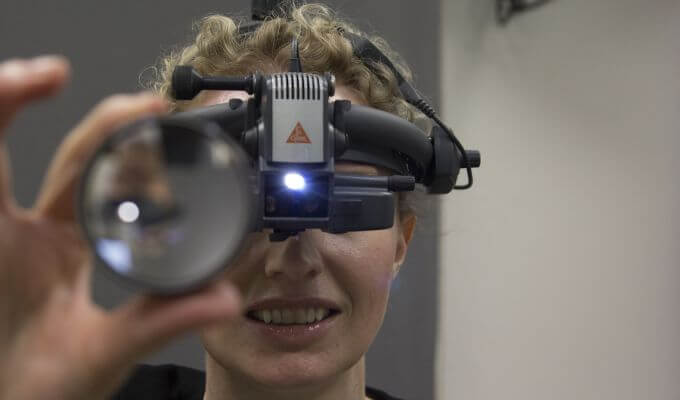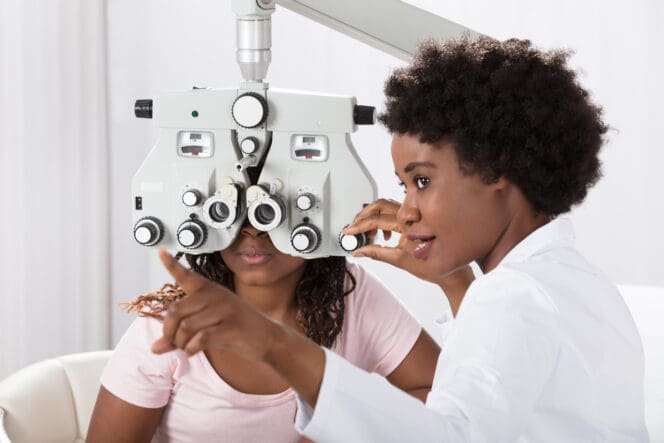A Biased View of Comprehensive Ophthalmology
Table of ContentsThe Single Strategy To Use For Paediatric OphthalmologySee This Report about Comprehensive OphthalmologyEmergency Eye Problems - TruthsThe Emergency Eye Problems DiariesThe Main Principles Of Comprehensive Ophthalmology
Ophthalmologists are clinical doctors who specialize in the diagnosis and also therapy of eye and also vision issues. These 3 types of eye care specialists have rather similar-sounding names and overlapping job summaries.They can not give eye examinations, write prescriptions, or identify or treat eye issues. can examine your eyes, examination your vision, suggest glasses or get in touches with, and also diagnose and also deal with many eye disorders as well as diseases. They are not medical physicians or surgeons however can suggest certain eye-related medicines. also give eye examinations, vision testing, and prescriptions for glasses or get in touch with lenses.
They can do eye surgical treatment and also provide follow-up care. When providing a thorough eye test, an eye doctor will assess your vision and, if needed, locate your eyeglass/contact lens prescription. They will evaluate exactly how your students react to light, inspect the alignment of your eyes, and also make certain the muscular tissues that relocate your eyes are functioning effectively.
Everything about Adult Cataract
Eye doctors identify and deal with injuries, infections, illness, as well as disorders of the eye. Therapies can consist of medicine taken orally (by mouth) or topically (in the eye), surgical procedure, cryotherapy (freeze therapy), and also radiation treatment (chemical treatment). Ophthalmologists participate in medical school then receive a number of years of specialty training in the clinical and medical treatment of the eye.
As they are the only doctor who can deal with all eye problems, ophthalmologists see a wide array of eye conditions, consisting of: Just how commonly should you have an eye test? What are signs that indicate you may have an eye problem that requires to be inspected by an ophthalmologist? The American Academy of Ophthalmology suggests: As children's eyes are growing and changing rapidly, they should receive a vision testing.
Adults that have healthy eyes and exceptional vision must have four thorough eye tests: one in their 20s, 2 in their 30s, and one at age 40. These checkups might permit the eye doctor to capture an eye disease or vision changes beforehand. By the time you discover symptoms, you might already have some vision loss.
Excitement About Amblyopia
People who are at a greater danger of eye condition may need to get an eye exam a lot more typically (https://my-store-cfbee8.creator-spring.com/). After age 65, your eyes should be checked every one to 2 years.
An eye doctor is a medical professional who specializes in eye care. They are licensed to identify as well as deal with problems that impact the eye.
An ophthalmologist can: carry out eye examsdiagnose as well as deal with eye conditions as well as diseasesperform eye surgeryprescribe and fit eyeglasses and also get in touch with lenses, According to the American College of Surgeons, they are the only health care experts that have actually received training to diagnose as well as deal with all conditions that influence an individual's eyes as well as vision. To qualify as an eye doctor in the United States, a person should finish about 12 years of education and also training - https://www.darkreading.com/profile.asp?piddl_userid=487321.
The 10-Second Trick For Emergency Eye Problems


An eye doctor may pick to complete a fellowship to become a subspecialist in one location of eye health and wellness. This training prepares them to treat even more specific or intricate conditions in different components of the eye or a particular group of individuals. Subspecialists can focus on: This concentrates on cataract surgical treatment, corneal hair transplant, and also refractive eye surgery. https://www.avitop.com/cs/members/drc4r0l1n3ctt.aspx.: This location focuses on problems that affect the retina and also vitreous.
This area concentrates on clinical as well as medical treatment of conditions that create damage to the optic nerve. This subspecialty concentrates on eye problems that influence youngsters. This includes discovering exactly how to perform surgeries, including removing growths and also fixing bony cracks. This area connects to the click over here now neurological problems that include aesthetic manifestations.

Comprehensive Ophthalmology - The Facts
The eye doctor will ask the person concerning their case history, including that of family participants. They will after that begin evaluating and analyzing the eyes. https://www.businessorgs.com/author/drc4r0l1n3ctt/. This might consist of: The eye doctor will ask a person to stand 20 feet far from a chart, cover one eye, and also state what they can see.
This assists the doctor understand just how sharp a person's vision is. Aesthetic area evaluations involve an eye doctor determining how much vision an individual has in either eye, whether they have any dead spots or any type of various other problems that might affect an individual's sight.Tests include: confrontation aesthetic field testautomated fixed perimetry testkinetic aesthetic area testfrequency increasing perimetryelectroretinography, Amsler grid Excessive pressure can harm the optic nerve and in some cases lead to glaucoma.
There are various sorts of tonometry, consisting of: The eye doctor initially numbs the eyes before touching the front of them with a handheld tool that glows blue. This approach is more precise than other approaches, such as non-contact tonometry. This examination uses a puff of air to identify the stress. Although this approach may be much less accurate, it does not call for using numbing decreases.